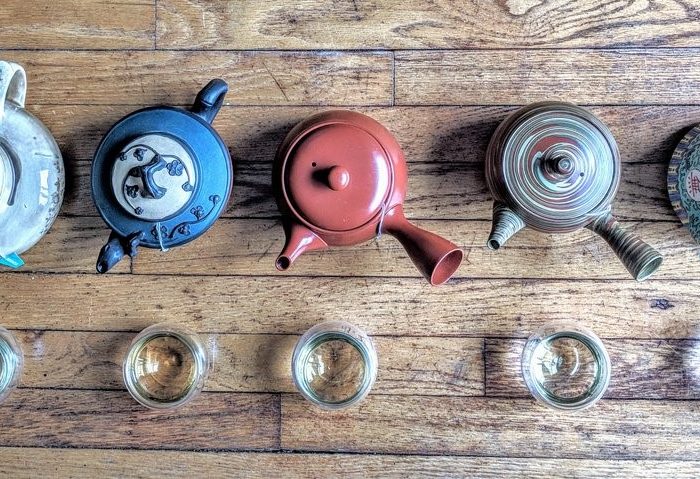So, exactly who is drinking tea? It looks like a coffee culture out there with some tea leaves thrown in here and there. But those tea leaves are gaining popularity. Tea has been around for centuries with Buddhists discovering it, wealthy people, Europeans, then brits drinking it, opium wars, Americans drinking it and starting revolutions because of it…tea has been around the world.

What is the story with tea now?
- Tea is the second most consumed beverage in the world right behind water.
- 80% of homes have some kind of tea in it.
- A few facts about tea in present day:
- In the USA, on a given day over 158 million people will drink tea.
- Over 3.6 billion gallons of tea are consumed by Americans every year.
- 77% of the tea brewed in 2014 in the US was in tea bags. (So not loose leaf. We need to work on that.)
- Black is the most consumed tea in the west at 84% in the US. 15% consumed is green tea; the other 1% of tea consumed is split between white, oolong and other teas.
Who is drinking tea now?
- 87% of millennials drink tea regularly.
What tea products are being consumed?
- It seems that only 15% of the tea consumed in the US is hot. It appears that iced tea mixes and pre-made beverages make up the remaining 85% of tea consumed. Interesting!
- Turkey was the largest tea consuming country in the world in 2016 and they are 4 times smaller than the USA. Each person in Turkey consumes approximately 7 pounds of tea a day. Approximately, 2-3g of loose leaf tea us used to make one 8oz cup of tea. So, 1 pound of tea makes approximately 200 cups of tea.
Note: USA population is approximately, 325.7 million in US; And population of Turkey is approximately, 79.51 million.
So, what makes tea stand out from other beverages that seem to be readily available like sodas and other sugary drinks?
- Tea is seen as a
- Healthy beverage
- A sugar free option, although, some of the pre-made tea options contain just as much sugar as a soda or sugary drink but there are fewer acids and additives in tea beverage.
Let’s have a look at the tea market.
- 519 million pounds of tea are imported into the US every year. That’s a lot of tea. Russia is the only other country that imports more tea.
- 3 billion pounds of tea are produced every year for consumption.
- There is a correlation between the amount of tea consumed and serious health risks, or rather lack of risk. For example, men who drink more than 1.5 cups of tea a day have a 70% less risk of colon cancer. [1, 4]
- While “real” tea is not caffeine free it does have significantly less caffeine in it than coffee. About 3 cups of tea make up one cup of coffee in terms of caffeine content. [1]
As mentioned above, 87% of millennials are drinking tea in the US. As we head north to Canada, millennials are the leaders in the Canadian tea revolution as well.
Canadian aged 19-37 make up more than 1.3 of all tea drinkers in Canada.
What is it about tea?
- Canada’s multicultural society with the traditions from different parts of the world help contribute the popularity of tea.
- The benefits of tea are
plentiful and are as diverse as the different types of tea. Some of the
benefits of teas are, [2]
- It can lower blood pressure,
- Decrease cholesterol levels,
- Aid in heart health
- There was a 23% increase in tea sales in 2015 in Canada, with those sales reaching $1.3 billion. The projection is that by 2020 tea sales will more than double in the millennial age group. [5]
How do millennials view tea?
- It seems millennials will experiment more with tea flavours and varieties of tea leaves.
- On average they will have 11 different brands of tea and 16 different teas in their home.
- While this demographic is the most financially constrained, tea is justified as an “affordable luxury”.
- It’s viewed as a healthy product with benefits such as relaxation, sleep and anxiety
So much going on with tea in present day. It doesn’t look like tea will be going anywhere but how will its position in society be viewed, in what forms, by whom and to what extent? The story of tea continues.
References:
- 19 Shocking Tea Consumption Statistics, May 2017, URL: https://brandongaille.com/18-shocking-tea-consumption-statistics/
- Millennials leading charge in Canada’s tea revolution, Jan 2017, URL: http://www.newswire.ca/news-releases/millennials-leading-charge-in-canadas-tea-revolution-610372145.html
- Something’s brewing, Siddiqi, M., Feb 2017, URL: https://www.theglobeandmail.com/life/food-and-wine/food-trends/somethings-brewing-canada-warms-up-to-luxury-teamarket/article34016227/
- Tea consumption and the reduced risk of colon cancer – results from a national prospective cohort study, Su, L.J., Arab, L., 2002, Public Health Nutrition: 5(3), 419-425.
- Millenninals drink and try the most tea in Canada, Shoup, M.E., Jan 2017, URL: https://www.beveragedaily.com/Article/2017/01/17/Canadian-millennials-drink-and-try-the-most-tea-research-finds
- Everyone will love this hazelnut spread stuffed cookies recipe - November 18, 2024
- The Greely Good Market is a Modern Outdoor Market - September 3, 2024
- Our Quick Visit to the Petawawa Container Market - September 3, 2024











